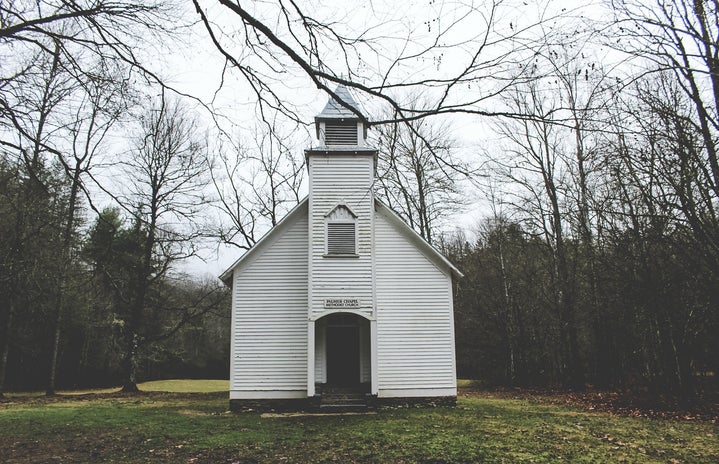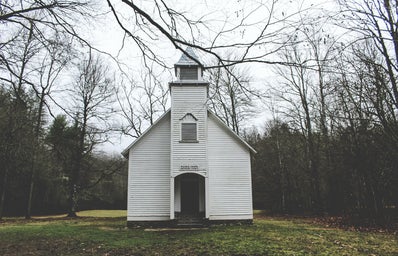Best Kept Secret: The Boston Globe and The Catholic Church Sex Abuse Scandal
The city of Boston, Massachusetts, has historically assumed the title of “America’s Most Catholic City.” In 2001, there were 3.8 million residents, 2 million of whom were Catholic – a staggering fifty three percent of the population. In many ways, the faith was a native belief, as if being a Bostonian and being a Catholic were synonymous traits. For this reason, the very fabric of the city was shredded when The Boston Globe published an long-deliberated piece exposing the rampant and systemic sexual abuse of children within the Boston Archdiocese in 2002. The content of the story, on its own, was not much of a shock to parishioners; rumblings of “bad apple” priests and tales of inappropriate behavior swirled around the community like folklore. In fact, the news of a rape cover-up was reported nearly six months prior but intentionally buried by editors of within a scantily read section of the paper. However, the implications of the news left this city grappling with both its past and its future, as devotion was upended by the confirmation of crime and pedophilia. As a result, other cities later came to confront sexual abuse in their local priesthoods, but none would struggle as deeply as the Boston community. The Globe’s investigative report exposed the decades-long entanglement of the law, religion, and culture that allowed for a heinous string of organized crime to become one of the city’s best kept secrets. Moreover, it displayed the dangerous power structure the church had erected, enabling widespread abuse and maintaining a facade of infallibility among members of the clergy.
Deep-rooted catholic beliefs permeated all spheres of life in Boston. From relationships to education to news publications, God, via the Archdiocese, was omnipresent. Historically speaking, The Globe and the Church had a complicated relationship. For readership’s sake, the paper aligned many of its stances with Church ideals, more for the large proportion of Irish-Catholic readers than the motives of the journalists on staff. However, by the early 2000s, many Bostonians began to turn away from the paper as it leaned more liberal and, by default, more anti-Catholic. Famously, former Massachusetts governor, Edward King, stated, “If God is with you, who can be against you, right? Except The Boston Globe,” in response to an editorial that supported abortion rights. However, The Globe was (and remains today) one of the city’s most powerful institutions, perhaps second only to the Archdiocese. Despite the previous conflict between the two, the investigation into sex abuse claims was unprecedented. The newspaper had ignored incriminating information for decades, but it wasn’t until the installation of Martin Baron, a Jewish outsider, as editor that stories of predatory priests received traction. This fact alone underlies the corruptive power of the Church; committed journalists were prevented from reporting impactful news due to stronger moral ties to their Catholic roots. Additionally, The Globe was plagued by fears of backlash, indicative of a blind community allegiance to the Church and its figureheads.
For this reason, what should have been a shocking exposé released during the summer of 2001, was instead largely missed or ignored by readers and editors, alike. Eileen McNamara, on July 29, 2001, wrote of new accusations against Cardinal Bernard Law for his knowledge and concealment of sexual abuser, Reverend John Geoghan: “If the Rev. John Geoghan raped dozens of boys after 1984 when Law admits he was warned that the priest had molested children, blame the children for standing in harm’s way, blame the psychiatrists for failing to cure a miscreant priest. If the faithful suspect the Catholic Church of complicity in the acts of a serial child molester, blame the plaintiffs’ lawyer for garnering headlines at the cardinal’s expense, blame the media for carrying these attacks against the church.” McNamara’s fiery rhetoric had critical implications but received little to no publicity after editors failed to deem the story “front-page news.” On the contrary, Boston’s Catholic leanings should have heightened The Globe’s responsibility to deliver the truth to a “faithful” audience. Instead, the lead was “buried” among lackluster news items. This editorial foreshadowed the battle to come. Here, the author’s stance, made clear by the repetition of “blame,” was highly accusatory. The chain of events she described, from rumor to confirmation and cover-up to legal action, signals the structural abuse of power exposed in the spotlight piece six months later. Additionally, she establishes an infallibility complex. Since the Cardinal asserted his own innocence, the parishes accepted it as truth. In exposing the allegations of Geoghan’s pedophilia and Law’s one-time complicity, McNamara only skimmed the surface. And given the loyalty of the media to the Archdiocese, it was a daunting task to take the story any further.
While the final story was printed in early January of 2002, The Globe’s Spotlight Team began to understand the endemic nature of this abuse much earlier. The Geoghan case acted as a launchpad for the investigative team composed of Mike Rezendes, Walter Robinson, Sacha Pfieffer, and Matt Carroll. From there, the group worked tirelessly for months to amass a database of Father Geoghan’s nearly 130 victims and a collection of their testimonies. But, unlike a usual news story, The Globe reporters understood that their angle, rhetoric, and information had to be irrefutable in order to take on Boston’s most powerful institution. When the piece was finally published on January 6, 2002, just twelve days after Christmas, it illustrated a deep examination of rampant pedophilia and complicity from leadership, claims supported by recently unsealed legal documents. Rezendes writes, “Since the mid-1990s, more than 130 people have come forward with horrific childhood tales about how former priest John J. Geoghan allegedly fondled or raped them during a three-decade spree through a half-dozen Greater Boston parishes.” The article reveals not just incidents, but rather a pattern of abuse, throughout six different congregations. The sheer fact that Geoghan’s predation continued despite reappointment implicates the leadership of each church and the entire Boston Archdiocese, as their negligence led to repeated transgressions. When examining the victims’ stories, it became clear the priest had groomed the boys, some as young as four years old, and generally targeted poor children from troubled homes: “The affable Geoghan usually befriended Catholic mothers struggling to raise large families, often alone. His offers to help, often by taking the children for ice cream or praying with them at bedtime, were accepted without suspicion.” Again, similarities across the accounts of survivors underlied the systemic nature of this molestation.
Within the Geoghan story, reporters from The Globe uncovered a larger narrative of complicity within the Archdiocese, implications of which were destructive to the Boston Catholic community and beyond. In perhaps the most pressing question of the piece, the paper writes, “Details about [Geoghan’s] sexual compulsion are likely to be overshadowed by a question that many Catholics find even more troubling: Why did it take a succession of three cardinals and many bishops 34 years to place children out of Geoghan’s reach?” This central theme began a discussion that carried the Roman Catholic Church into the twenty-first century. With Boston as the example, Rezendes detailed the legal prowess of the Church within the courts, citing Geoghan’s “remarkably skeletal” case record where “almost all the evidence in the lawsuits about the church’s supervision of Geoghan has been under a court-ordered confidentiality seal granted to church lawyers.” The author’s claim illustrated the grips of the Catholic Church over community members, enough to put its public image above the law. Unsurprisingly, the Archdiocese relied on its influence to keep the endemic issue hidden and enable throngs of pedophilic priests to continue their abuse. And, in the end, the reputation of the powerful people who allowed this organized crime to occur was protected by even those obligated to uphold the law. Boston, in this time period, serves as a prime example of the interwoven nature of law and religion. Lawyers, judges, and court officials felt a higher moral obligation to God, in the form of the Catholic Church, than to the principles of justice for abused children. The story produced by The Boston Globe Spotlight Team prompted other newspapers and dioceses, from the United States and around the world, to launch formal investigations into their local priesthoods. Resulting from the 2002 article alone, the Geoghan case incriminated six cardinals in cities from Brooklyn to New Orleans, indicating that abuse and coerced silence were not unique to Boston. Newspapers, at this moment in time, did not simply report influential events but, more importantly, created the history, itself, by exposing the secret of sexual abuse perpetrated by some of communities’s most powerful members upon their most vulnerable. The Atlantic’s Rachel Danadio even contends, “The dark secret of clerical sexual abuse and cover-up might never have come to light, if not for outsiders to the hierarchy: journalists […]. They helped reveal a pattern of concealment within the Church and drove a shift in the culture.” The Globe’s coverage of the story raised serious and enduring questions regarding the perceived infallibility and moral corruption of religious figureheads, and thus the future of Catholicism. In the minds of Bostonians, a rejection of the Catholic Church was the same as a total rejection of faith. This dilemma ravaged not only the morale of the community, but also the very core of the city. Even today, many Catholics, both inside and outside of Boston, still grapple with maintaining their religion and denouncing their local clergy members. Clearly, allegiance to a powerful system of organized religion allowed heinous crimes against children to occur for far too long. The Catholic Church sex abuse history, as exposed by The Boston Globe, proves just how critical the media was, and continues to be, in both reporting and creating American history.


